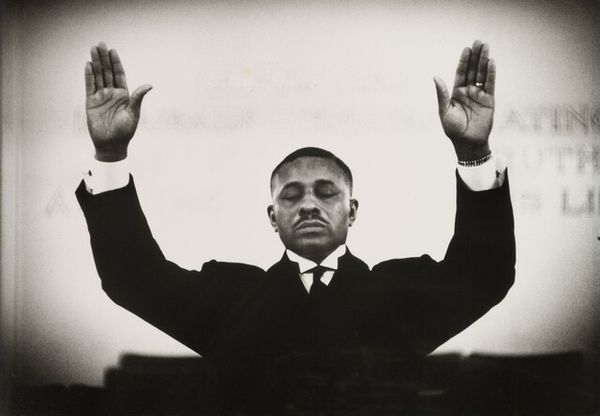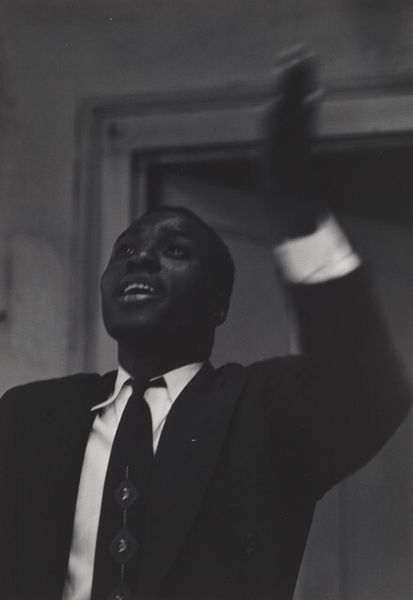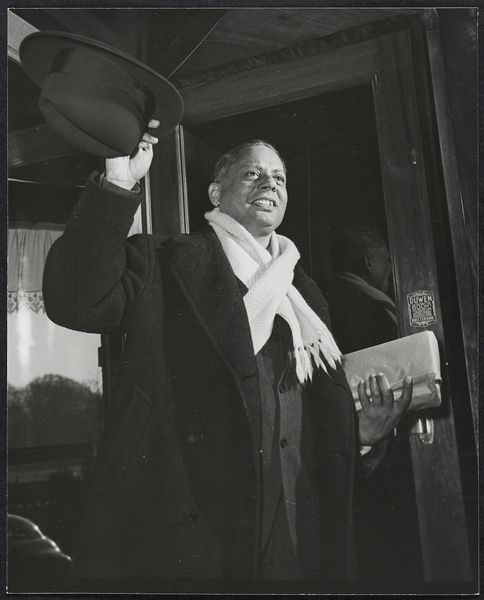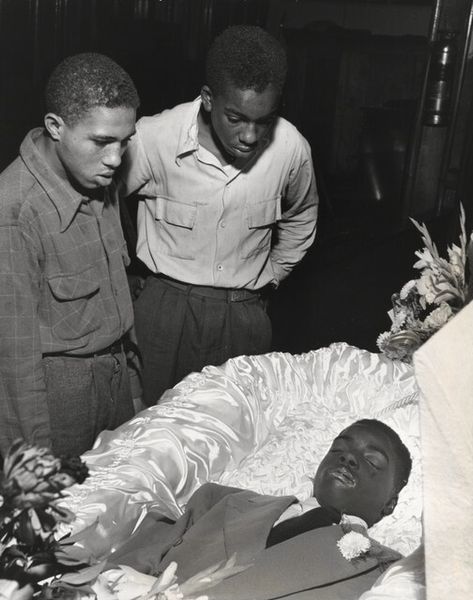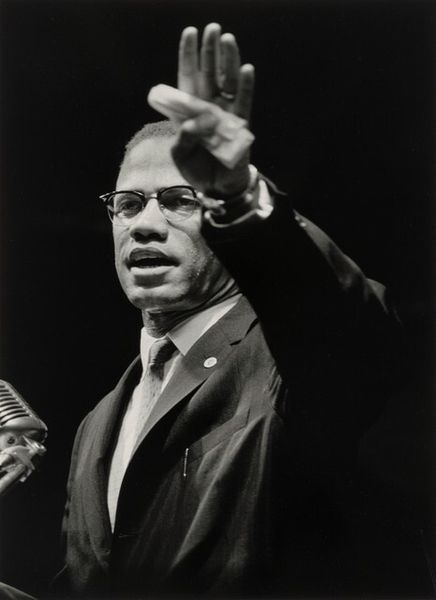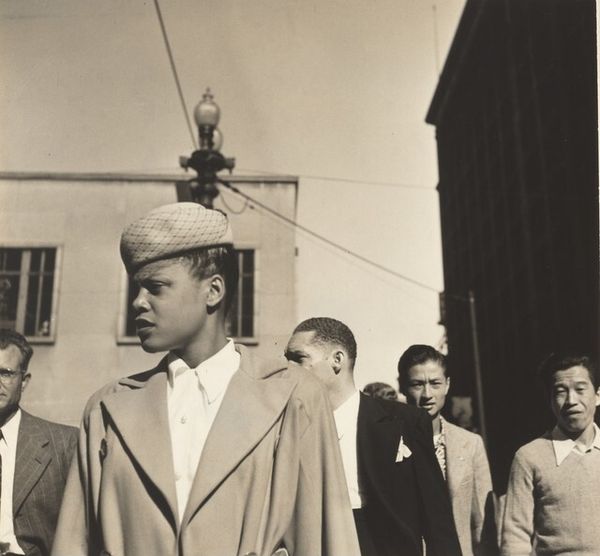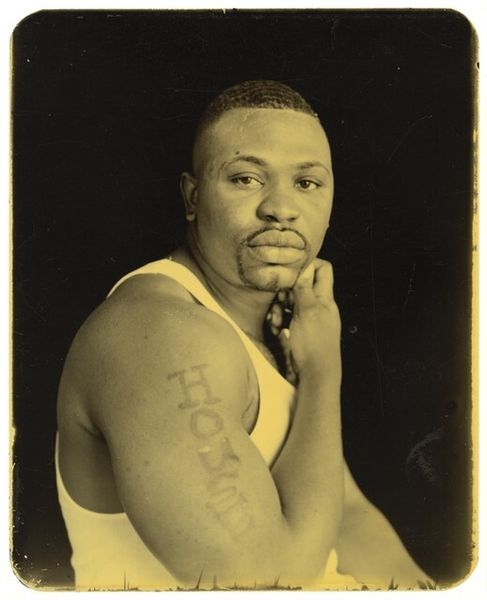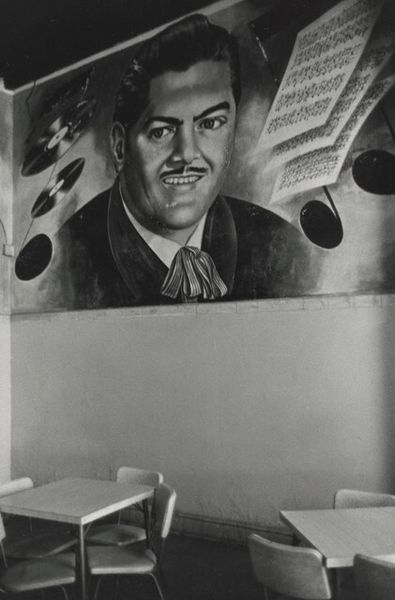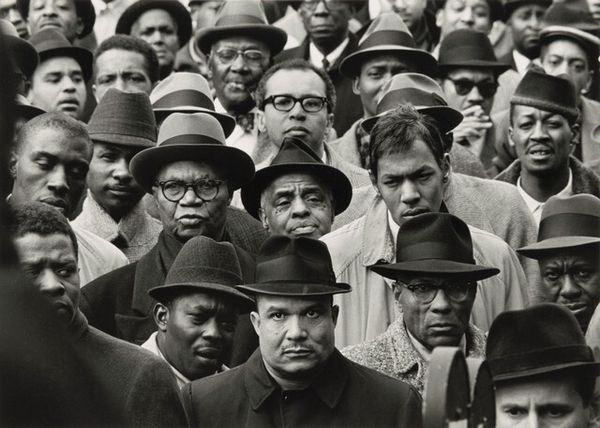
photography
#
portrait
#
photo restoration
#
low key portrait
#
portrait image
#
portrait subject
#
social-realism
#
photography
#
portrait reference
#
photojournalism
#
black-arts-movement
#
single portrait
#
portrait art
#
portrait character photography
#
fine art portrait
#
celebrity portrait
Dimensions: image: 23.9 × 18.5 cm (9 7/16 × 7 5/16 in.) sheet: 24.2 × 18.5 cm (9 1/2 × 7 5/16 in.)
Copyright: National Gallery of Art: CC0 1.0
Curator: Let’s consider this striking photo from 1963, "Reverend Martin Luther King at Press Conference.” Editor: It hits you immediately, doesn't it? That forceful gaze, the speaking mouth... it embodies resolute determination. Curator: It's fascinating to consider the equipment, isn't it? That large microphone clipped to his lapel. These were the direct tools through which King shaped the social and political landscape. Editor: Absolutely. Beyond the practical function, I am drawn to what that microphone signifies symbolically: amplified truth, a voice for justice, speaking to the urgency of civil rights. It anchors him directly to that historical moment. Curator: Exactly. And looking closer at the materials themselves, consider the photographic paper used here and its degradation, its social value shifted. It also serves as material culture, representing a very specific technology in photojournalism, especially during the Civil Rights Movement. Editor: You’re right, the medium lends a stark rawness, perfectly fitting. It lacks any glamour; it emphasizes the authentic grit and urgency of that period. Curator: And how do you see that connecting to what he represents, not just within his lifetime, but over time? Editor: He is timeless, a pillar. When I see an image like this, his clothing is just a uniform: the symbols I pick out are the ones that tell me the struggle never truly vanishes, but reappears to each generation that sees this image. Curator: I see his well-tailored suit, and I'm immediately struck by questions of access and power during that era: How were these images made accessible to Black communities facing disenfranchisement? Did his choice of presentation – sharp suit versus more casual dress - factor into audience perception and media representation, reinforcing a sense of respectability? Editor: Interesting question. For me it raises something further – he’s not just a symbol *of* respectability, but an agent that creates the new imagery that embodies it, so that others could picture themselves this way. Curator: His presence undeniably affected not only his own image, but created a framework through which all those that followed, for generations. The very act of making this photograph becomes part of that lineage of power. Editor: Thinking about this image has really driven home just how much symbolic power a portrait like this can contain. Curator: Agreed. When looking at art through a lens that foregrounds its creation, labor, distribution and reception reveals so much more about its cultural and social meanings.
Comments
No comments
Be the first to comment and join the conversation on the ultimate creative platform.
